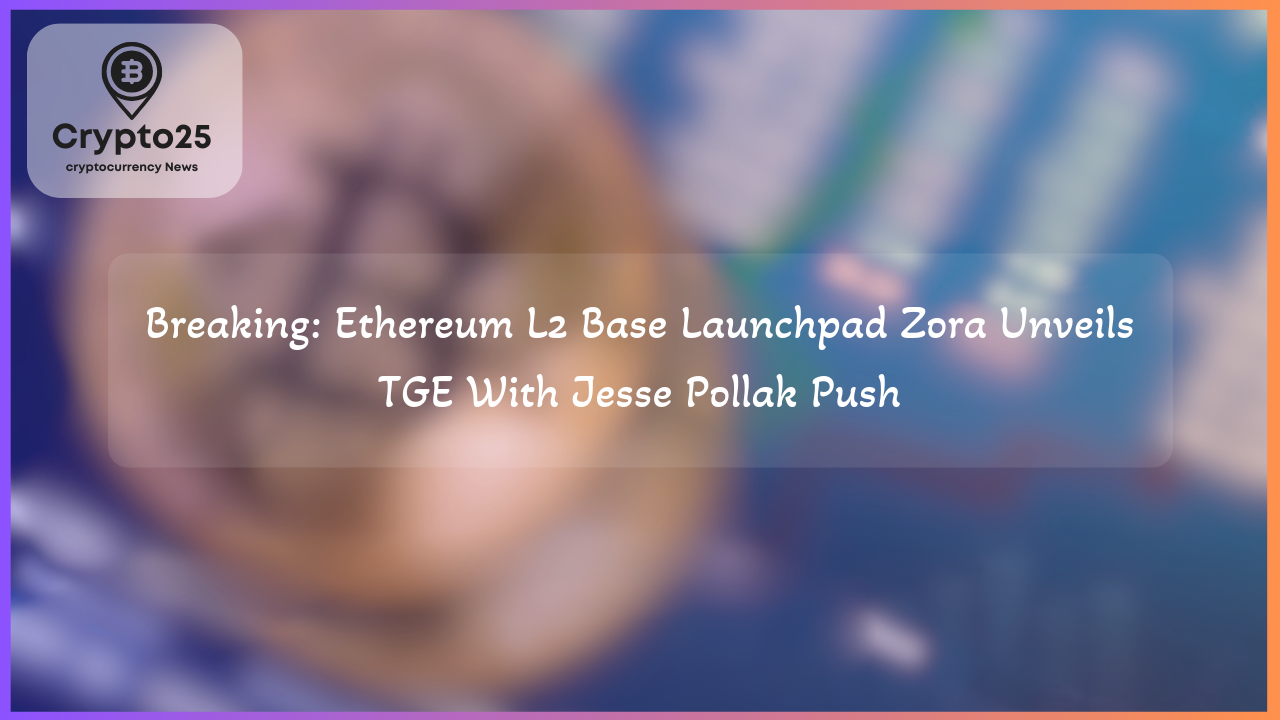
The landscape of social media and blockchain is witnessing transformative developments, with Zora introducing its own token on Coinbase’s Base chain. This innovative step aims to fuse social media with blockchain technology, setting the stage for new ways to monetize and reward content creation. However, the launch has sparked debates and raised questions about intentions and market readiness within the crypto community.
## Zora Token Launch: Revolutionizing Content Monetization on Blockchain
Zora, a decentralized platform that tokenizes every social media post on Coinbase’s Base layer-2 blockchain, is spearheading the “content coin” movement. This initiative, championed by Jesse Pollak, the creator of Base, aims to disrupt traditional social platforms by directly compensating creators. Pollak envisions a future where creators are rewarded fairly through blockchain technology, addressing long-standing criticisms of centralized social media platforms that prioritize profits over equitable creator payments.
The platform’s experiment began with the launch of a token on Zora called “Base is for everyone.” The token briefly reached a $16.9 million market cap before experiencing a sharp decline of 92% within two hours. Despite initial volatility, the campaign generated significant traction, with Zora’s trading activity surging. According to analytics platform Dune, daily traders on Zora skyrocketed from 40,638 to an all-time high of 284,931 within days.
This spike in activity demonstrates growing interest in tokenized content but also underscores the speculative nature of the crypto market. Critics, however, argue that the timing of Zora’s token launch raises concerns about whether the initiative’s motives are purely innovative or opportunistic.
## Criticism and Controversy Surrounding the Content Coin Movement
Notable voices in the crypto space, such as Alon Cohen, co-founder of Pump.fun, have criticized the timing of the campaign. While acknowledging Pollak’s forward-thinking approach, Cohen believes the “content coin” initiative might be premature in gaining mainstream acceptance. Further skepticism arose when pseudonymous crypto influencers like IcoBeast suggested that the recent surge in Zora activity was fueled by behind-the-scenes market manipulation, rather than organic interest.
For example, doubts intensified when Zora announced the launch of its token following the campaign’s sudden wave of attention. Critics speculated that early participants in the “coin everything” push would receive outsized allocations of Zora tokens, potentially benefiting financially once these tokens hit mainstream exchanges like Coinbase.
Polling data revealed conflicting perspectives from industry insiders. While some cryptocurrency advocates believe the initiative paves the way for a content-driven Web3 future, others remain wary of its timing and execution, associating it with existing challenges in tokenomics and market manipulation.
## Zora’s Tokenomics and Coinbase Ties: Fueling Speculation
Another focal point of the debate is Zora’s tokenomics. According to disclosed figures, 45% of the token supply is allocated to the team and strategic contributors, raising eyebrows within the community. Further controversy emerged when CryptoRank revealed Coinbase participated in two funding rounds for Zora, contributing a total of $52 million. Although Coinbase’s exact investment remains unclear, some speculate that its involvement may suggest vested interests in the token launch.
| Title | Details |
|---|---|
| Market Cap | $1.2 Trillion |
Despite these concerns, Zora’s efforts underscore a broader trend of integrating blockchain functionality into social media ecosystems. Proponents argue that this approach democratizes content monetization, giving creators more control over their earnings and direct access to audiences without intermediaries.
## The Future of Content Coins and Blockchain in the Creator Economy
While debates over Zora’s launch persist, it signals a broader adoption of blockchain technology in the creator economy. By tokenizing posts, Zora enables creators to gain intrinsic value for their contributions, moving beyond the advertising-centric monetization models of legacy platforms like Instagram or YouTube. This shift could dramatically reshape how creators interact with followers and monetize their work.
However, challenges remain. Critics are concerned with the speculative nature of tokenized assets, as evidenced by the volatility of Zora’s tokens. Furthermore, questions surrounding the transparency of token allocations and the role of major stakeholders like Coinbase must be addressed to ensure trust within the ecosystem.
As blockchain advancements continue, the potential for a creator-led economy powered by decentralized platforms remains promising. Projects like Zora may still be in their infancy, but they highlight a significant step toward redefining how content is valued and how creators are compensated in a Web3 world.
In conclusion, while Zora’s recent token launch has encountered criticism and skepticism, it serves as a catalyst for broader discussions on the future of blockchain-integrated social platforms. Whether Zora’s content coin model succeeds or stumbles, the initiative underscores a pivotal moment in crypto’s evolution, emphasizing innovation, transparency, and the quest to empower creators worldwide.
